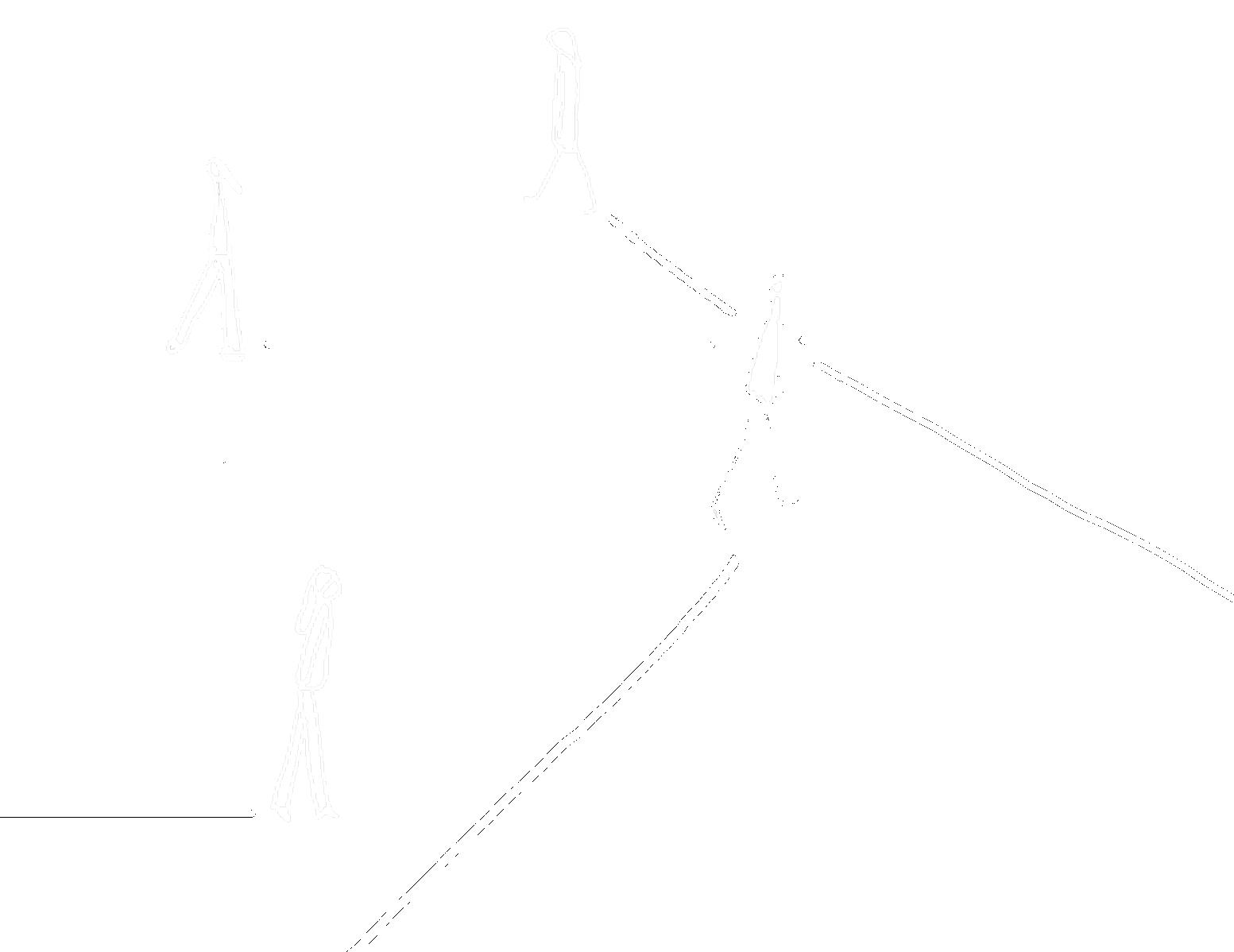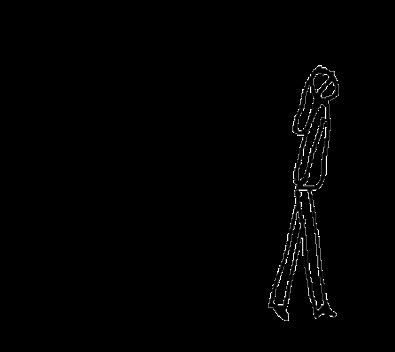PORTFOLIO ARCHITECTURE







This portfolio represents the core of my architectural journey, showcasing the projects that have shaped my approach and inspired my work. Each project here reflects my commitment to creating spaces that are not only functional but also comfortable, aesthetically pleasing, and deeply connected to the needs of the users and the surrounding urban context.
My goal as an architect is to design environments that improve the quality of life, fostering positive change in the social fabric of the spaces I create. I am driven by a continuous pursuit of understanding how architecture can influence and enhance daily life.
This portfolio highlights works that stay true to my principles: a focus on sustainability, comfort, and the human experience, while responding thoughtfully to the unique challenges of each context.

My name is Isabel Andrea Santoro Miquilena. I was born on July 23rd, 1999, in Barquisimeto, Venezuela. I am an architect driven by a profound enthusiasm for design, creative processes, and the art of shaping spaces. What fascinates me the most about architecture is its power to create
The fact that we are able to create experiences in environments that people will occupy, explore, and live in is the reason I decided to have this vocation. I’m also very committed to the environment and the crucial role architecture plays in its protection and sustainability.
As well, one of my greatest passions is reading; I am deeply curious and constantly inspired by details, meaning, and symbolism, which fuels my love for research, learning and discovery. Energetic, creative, and determined, I thrive on challenges and finding innovative solutions to problems. My optimism and spontaneity make me a dynamic team player, always ready to collaborate and bring ideas to life with excitement and purpose.
• High School: 2011-2016
“Andrés Bello” School
• Bacherlor’s Degree: 2017-2023
Degree on Architecture & Urbanism - Universidad Central de Venezuela
• Master’s Degree: 2023-now
Master of Architecture for Sustainability - Politecnico di Torino
Interships and Volunteering:
• Volunteer at “Una Mirada al Cielo” - Open air museum at Bella Vista Cementery, Barquisimeto, Venezuela.
Develop a sustainable plan to preserve the city’s heritage at the historic cemetery. 2019-2020
• University Intership of Barquisimeto’s Cartographic Record, UCV.
Update existing records of the city’s urban planning. 2021 Work Experience:
• Inserco C.A.
Assisted in architectural design, drafting, and project coordination, contributing to sustainable and innovative solutions for residential and commercial projects. 2019-2021
• SIMA, Projects + Construction
Manage and lead some architectural projects, including renovation works, overseeing interior design, team collaboration, and client engagement to deliver creative and sustainable results. 2021-2024
Spanish ...........Native English..............C1 Level Italian...............B2 Level
AutoCAD
Sketch Up
Revit
InDesign
Lumion
Photoshop
Illustrator
Rhino 3D
Competitions:
• Cuéntanos, tú eres Venezuela - Tourism Edition
Competition of Architectural Ideas and Design. 2019
• Nominated for Axis Awards - Design Excelence XVII Edition. IX Category. 2023
Workshops:
• DISLOCAL Rio/Turbio/Valle/Ribera
Explore Development Solutions in real time. 2023
(https://www.archdaily.cl/cl/1006695/ una-escuela-de-arquitectura-en-el-rio-turbio-de-barquisimeto-venezuela)

01.
SEMERUCOS URBAN PLAZA PAG: 06
02.
BARARIDA LIBRARY PAG: 12
04.
MURAZZANO: A LIVING SHOWCASE PAG: 28
05.
LIVING THE VOID PAG: 36
03.
URBAN GAP PAG: 20
Use: Recreational
Location: Nueva Segovia, Barquisimeto, Lara, Venezuela.
Plot area: 3.530 m2
Facilities: Green paths, sport areas, terraces,children playground, caffé.
Challenge: Balancing the need for urban green space with the functional demands of a commercial area. While integrating public amenities and fostering a dynamic environment, the design must also address the complex task of preserving the open, accessible nature of the plaza.
Located in the highly commercial area of Nueva Segovia, Barquisimeto, this project addresses the need for urban green spaces while integrating functional public amenities. The design centers on a parametric canopy that welcomes visitors to the plaza, covering a significant portion of the space while preserving an open ground level to maintain its public character. This dynamic structure also incorporates terraces at various levels, creating versatile areas for leisure and activity. The plaza features dedicated zones for sports and recreation, blending functionality with innovative design to revitalize the urban landscape.













































































The design of the parametric canopy also seeks to introduce something distinct and innovative, aiming to engage the plaza in a way that feels inviting and inclusive. The canopy is not just a functional element; it is meant to envelop the space, creating a sense of unity while drawing in users from various directions. Its organic, flowing form seeks to break away from traditional canopy designs, offering a bold, welcoming presence that encourages people to approach and explore the plaza.
Additionally, creating versatile recreational areas within the constraints of a dense, commercial context requires careful planning to ensure the space serves both leisure and activity while contributing to the revitalization of the surrounding urban landscape.
















































































































































Use: Library
Location: Barquisimeto, Lara, Venezuela.
Plot area: 5.540 m2
Facilities: General library, children library, reading rooms, playroom, computers room, common areas.
Challenge: Creating a seamless transition between the urban environment and the park, while respecting the existing boundaries and scale of the space.
This project explores the concept of “boundaries” and their architectural interpretation, focusing on revitalizing one of the deteriorated entrances of the Bararida Zoological and Botanical Park. Situated across from a prominent public space, the design reimagines the entryway as an experiential path that transitions visitors from the urban environment into the park. This pathway connects the park’s entrance to a proposed new library, enhancing its role as a public and educational hub.
In addition, the nearby planetarium within Bararida Park required updated facilities, including the library itself. The project harmonizes these key elements—the entrance, the planetarium, and the library—creating an interconnected and immersive experience that redefines the boundaries between public, educational, and recreational spaces.














































































































































































































































































































































































































































ARQ. MELISSA PARRA
UDE FAU UCV PROF: ARQ. MELISSA PARRA






espacio de transicion














































































espacio de transicion ESPACIO PUBLICO A 3 ESCALAS recorrido como conector volumetria








































como espacio de transicion ESPACIO PUBLICO A 3 ESCALAS recorrido como conector volumetria 3 4 5 Reading rooms Level Library Level




































































































































































































































































































Use: Student residency
Location: Barquisimeto, Lara, Venezuela.
Plot area: 1.255,6 m2
Facilities: Students residency, market, coffee shop, library, computers room, play room, common area, meeting rooms, vertical gardens, terraces, gym.
Challenge: Addressing the congestion along the avenue while successfully creating an inviting “gap” that balances openness with functionality.

The proposal seeks to create a sense of integration and relief along a congested avenue by introducing a “gap” or opening that offers a variety of activities and spaces for people to gather and linger. This space is designed to establish meaningful connections between the visiting communities and local residents, fostering interaction and engagement.
A key objective of the project is to encourage productivity and the exchange of ideas within the community that inhabits the space. To achieve this, the architectural volumes are strategically arranged to grow inward, creating a sense of openness while incorporating green spaces, terraces, urban gardens, and habitable green roofs.
These features not only enhance the aesthetic and environmental quality of the project but also serve as communal areas that promote sustainability and social interaction. The overall design prioritizes the well-being of its users, encouraging both individual and collective productivity in a harmonious, eco-friendly environment.





objetivos
objetivos
La propuesta busca la integración y el respiro de una avenida congestionada donde, por una "grieta" que contenga distintas actividades y espacios de permanencia, se puedan establecer conexiones entre las diferentes comunidades que visitan la zona y sus habitantes.
La propuesta busca la integración y el respiro de una avenida congestionada donde, por una "grieta" que contenga distintas actividades y espacios de permanencia, se puedan establecer conexiones entre las diferentes comunidades que visitan la zona y sus habitantes.
Una de las principales intenciones del proyecto es la productividad y la retro alimentación de la comunidad que lo habite, por lo que los volumenes estarían dispuestos de manera que crezcan hacia adentro, contando con espacios verdes donde se dan lugar, terrazas, huertos y techos verdes habitables.
Una de las principales intenciones del proyecto es la productividad y la retro alimentación de la comunidad que lo habite, por lo que los volumenes estarían dispuestos de manera que crezcan hacia adentro, contando con espacios verdes donde se dan lugar, terrazas, huertos y techos verdes habitables.

The strategy involves placing two buildings along the edges of the narrow plot, connected by multiple bridges. One building houses commercial spaces, while the other features residential units on the upper floors. Between them, a narrow yet inviting central space serves as a passage and shared common area, designed to foster interaction and enhance the overall experience for users.




objetivos










La propuesta integración y el respiro avenida congestionada donde, "grieta" que contenga distintas y espacios de permanencia, puedan establecer conexiones las diferentes comunidades visitan la zona y sus habitantes.













Una de las principales intenciones del proyecto es la productividad y la retro alimentación de la comunidad que lo habite, por lo que los volumenes estarían dispuestos de manera que crezcan hacia adentro, contando con espacios verdes donde se dan lugar, terrazas,

































































ESC: 1:200





ESC: 1:200 ESC: 1:200







ESC: 1:200 ESC: 1:200







Use: Cultural
Location: Murazzano, Cuneo, Italy.
Facilities: Market, urban furniture, cultural center, common areas.
Challenge: Transform Murazzano into a “Living Showcase” without compromising its authenticity or overwhelming its community and infrastructure.
The “Living Showcase” concept transforms Murazzano into a dynamic space where architecture and urban design reflect the town’s identity and guide its users through an engaging experience.
The project responds to the unique opportunities and challenges of Murazzano, from its rich cultural heritage and event-focused community to the demands of increasing tourism, seasonal limitations, and an aging population. Through four strategic interventions, the design reimagines the town as a cohesive narrative—blending its history, community needs, and sustainable solutions into an enduring, year-round urban framework that supports both residents and visitors.



development and recognition. Community event organization: The community's ability to organize events showcases a vibrant and engaged population, fostering a sense of community and pride. Tourism
of the community. and community activities. Aging society: The presence of an aging population poses a risk to the preservation of local culture and practices, potentially leading to a loss of heritage.
The design concept of "Living Showcase" aims to highlight the values of Murazzano, using architectural and urban tools to enable the municipality to tell its own story and guide space users.

In response to Murazzano's strengths and challenges, we present four strategies. These interventions strategically address the city's rich cultural heritage, event-centric community, growing tourism, seasonal constraints, aging demographic concerns, and infrastructural limitations. Each strategy represents an architectural narrative, a synthesis of design principles and community needs, aimed at fostering a sustainable, vibrant, and year-round urban experience.
A welcoming reception area for visitors, providing an introduction to Murazzano's cultural and economic THE GALLERY Is a degustation gallery and local product market, here, visitors can immerse themselves in the local flavors through tastings while also having the opportunity to purchase authentic products.

A Path adorned with information points and innovative urban furniture. This strategic walkway guides residents and visitors through the cultural and economic highlights
Serving as the culmination of the strategic route, this is a public square and pavilion designed to nurture local businesses and entrepreneurs. With features like a social kitchen, a workshop area for children, and an event space with panoramic views. 2 4
URBAN CORE CENTER




Municipality: Murazzano (CN), Italy


















































PATH SECTION SCALE 1:500
Perspective of the gallery






Professors: Francesca Frassoldati, Nadia Caruso, Magda Bolzoni, Marta Montanini
Assistants: Lucilla Barchetta, Paolo Bianco, Francesca La Monaca, Sofia Leoni, Xiang Ling, Lorenzo Serra Bellin


SOCIETY AND TERRITORY A | POLITECNICO DI TORINO – MAST | A.A. 2023/24

GROUP 05

INTERFACES 2023 | ARCHITECTURE, SOCIETY AND TERRITORY A | POLITECNICO DI TORINO – MAST | A.A. 2023/24


Students: Monika Bogacka, Isabel Santoro, Victoria Rojas
Use: Preschool and nursery
Location: Torino, Piemonte, Italy
Plot area: 6.345 m2
Facilities: Administration, classrooms, dormitories, playrooms, terraces, lavatories, libraries, medical rooms, gym.
Challenge: Enhance environmental performance while creating functional, adaptable, and engaging spaces that meet the diverse needs of its young users, educators, and administrators.
This proposal reimagines the kindergarten and nursery school at Via Leoncavallo 61 in Torino, originally built in 1974. Rooted in modernist principles, the existing structure was designed to maximize efficiency and accommodate a growing student population.
Our project seeks to transform the building into a vibrant, sustainable space that prioritizes the well-being of its young users. Spaces are redefined to reflect the diverse needs of children, educators, and administrators, creating a dynamic, functional, and inspiring environment for early education.






























































































































































































































































The kindergarten and nursery school located in Torino at Via Leoncavallo 61 was built in 1974. The original building was designed to be practical and efficient in terms of space organization, maximizing space for a growing student population. The design incorporated modernist principles, featuring clean lines, rectangular prisms, and the use of modern materials like concrete and glass. The building has a symmetrical layout with three massive blocks. The first floor accommodates kindergarten students aged 3-6, while the second floor is used for nursery students aged 0-3.
The building’s massive design limits natural lighting, particularly in the central areas. Initial solutions like second-floor terraces and roof windows on the first floor were insufficient, leading to unused, overheated spaces and solar load challenges from the glazed facades.
The proposal introduces a southwest-northeast main circulation axis with a social space, galleries, and a transparent roof, and a secondary southeast-northwest axis for basement access and improved lighting/ventilation. Two main voids—a courtyard and glass ceiling space—enhance ventilation and lighting. Terraces on both floors offer cross-ventilation and connect indoor and outdoor spaces, with mobile windows integrating ground-floor terraces.
Spaces are redefined to match user needs: the basement and southwest block serve administrative purposes, while the ground and first floors focus on ‘learn, play, do’ spaces, blending classrooms, art spaces, and common areas.

























Living the Void

